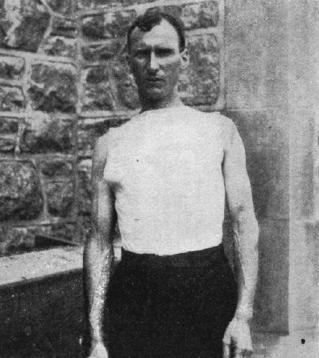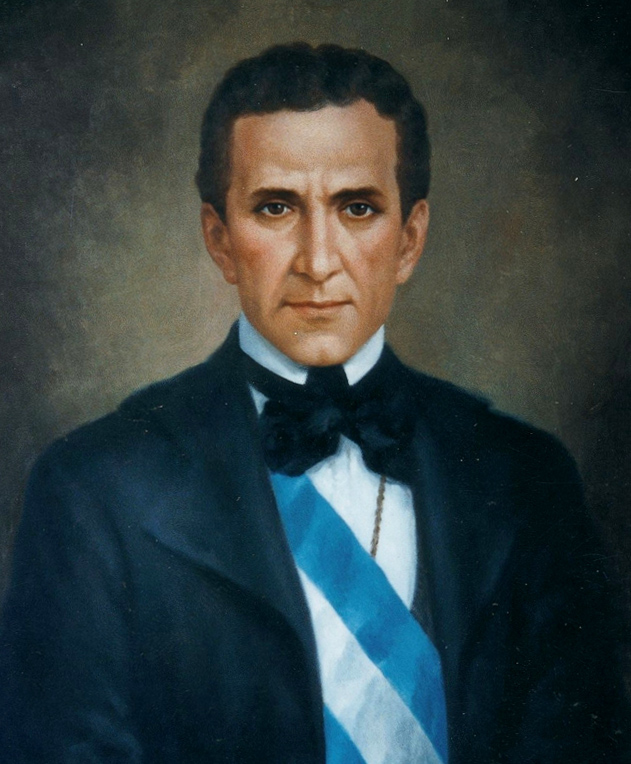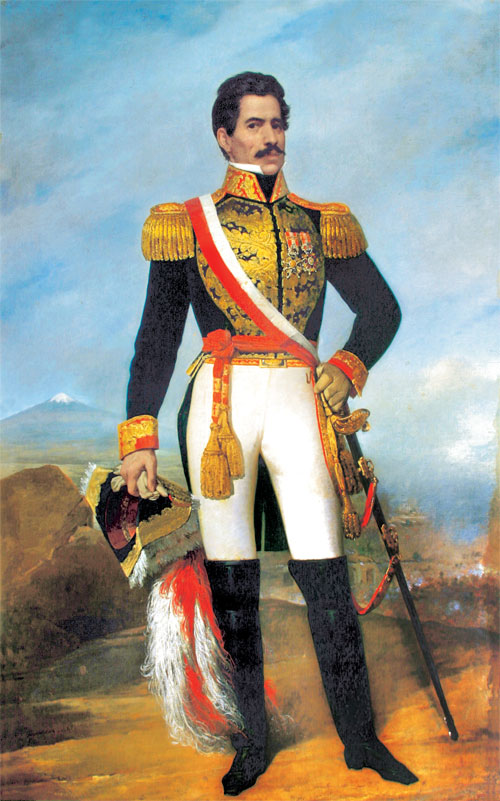|
Juan Crisóstomo Torrico
Juan Crisóstomo Torrico Vargas (January 21, 1808, Lima, Peru – March 27, 1875, Paris, France) served as the 16th President of Peru during a brief period in 1842. At age 34, he was Peru's youngest President ever. In 1820, Torrico participated in the army of José de San Martín. He subsequently joined the ranks of Agustín Gamarra and participated under his leadership campaigns against the Peru-Bolivian Confederation, where the Peruvian forces were defeated in 1841 and Gamarra died in the battle of Ingavi on November 18, 1841. After Gamarra's death, Manuel Menéndez assumed the presidency of Peru. Torrico launched a successful coup d'état against Manuel Menéndez and assumed the presidency of Peru. His grab for power was short-lived since Peru was suffering various civil wars and Torrico was ousted during that same year by Juan Francisco de Vidal. Torrico found refuge in Bolivia, where he conspired against Vidal and then against Manuel Ignacio de Vivanco. He returned to Peru ... [...More Info...] [...Related Items...] OR: [Wikipedia] [Google] [Baidu] |
Minister Of Finance Of Peru
The Ministry of Economy and Finance (, MEF) of Peru is the government ministry responsible for the planning and execution of economic policies of the Peruvian government with the goal of optimizing the economic and financial activities of the state, establish macroeconomic activity, and achieve the sustainable growth of the nation's economy. The current Minister of Economy and Finance is , serving since 13 May 2025. History On August 13, 1821, José de San Martín, president of Peru, created the General Secretariat of Finance along with the Chancellery, and the War and Navy Department. The first minister of Finance was Hipólito Unanue. On March 21, 1824, Simón Bolívar issued a decree in Trujillo reducing the three ministries to a single one, which would become the General Secretariat of Affairs of the Peruvian Republic (), under Colonel José Gabriel Pérez. However, shortly thereafter, the Governing Junta repealed the decree, reestablishing the three ministries. On March 2, ... [...More Info...] [...Related Items...] OR: [Wikipedia] [Google] [Baidu] |
Presidents Of Peru
The president of Peru (), officially the constitutional president of the Republic of Peru (), is the head of state and head of government of Peru. The president is the head of the executive branch and is the supreme head of the Armed Forces and National Police of Peru. The office of president corresponds to the highest magistracy in the country, making the president the highest-ranking public official in Peru. Due to broadly interpreted impeachment wording in the Constitution of Peru, 1993 Constitution of Peru, the Congress of Peru can impeach the president without cause, effectively making the executive branch subject to the legislature. The president is elected to direct the general policy of the government, work with the Congress of the Republic and the Council of Ministers (Peru), Council of Ministers to enact reform, and be an administrator of the state, enforcing the constitution, which establishes the presidential requirements, rights, and obligations. The executive br ... [...More Info...] [...Related Items...] OR: [Wikipedia] [Google] [Baidu] |
Peruvian People Of Spanish Descent
Peruvians (''/peruanas'') are the citizens of Peru. What is now Peru has been inhabited for several millennia by cultures such as the Caral before the Spanish conquest in the 16th century. Peruvian population decreased from an estimated 5–9 million in the 1520s to around 600,000 in 1620 mainly because of infectious diseases carried by the Spanish. Spaniards and Africans arrived in large numbers in 1532 under colonial rule, mixing widely with each other and with Native Peruvians. During the Republic, there has been a gradual immigration of European people (especially from Spain and Italy, and to a lesser extent from Germany, France, Croatia, and the British Isles). Chinese and Japanese arrived in large numbers at the end of the 19th century. With 31.2 million inhabitants according to the 2017 Census. Peru is the fourth most populous country in South America. Its demographic growth rate declined from 2.6% to 1.6% between 1950 and 2000, and its population is expected to reach ... [...More Info...] [...Related Items...] OR: [Wikipedia] [Google] [Baidu] |
People From Lima
The term "the people" refers to the public or common mass of people of a polity. As such it is a concept of human rights law, international law as well as constitutional law, particularly used for claims of popular sovereignty. In contrast, a people is any plurality of persons considered as a whole. Used in politics and law, the term "a people" refers to the collective or community of an ethnic group or nation. Concepts Legal Chapter One, Article One of the Charter of the United Nations states that "peoples" have the right to self-determination. Though the mere status as peoples and the right to self-determination, as for example in the case of Indigenous peoples (''peoples'', as in all groups of indigenous people, not merely all indigenous persons as in ''indigenous people''), does not automatically provide for independent sovereignty and therefore secession. Indeed, judge Ivor Jennings identified the inherent problems in the right of "peoples" to self-determination, as i ... [...More Info...] [...Related Items...] OR: [Wikipedia] [Google] [Baidu] |
1875 Deaths
Events January * January 1 – The Midland Railway of England abolishes the Second Class passenger category, leaving First Class and Third Class. Other British railway companies follow Midland's lead during the rest of the year (Third Class is renamed Second Class in 1956). * January 5 – The Palais Garnier, one of the most famous opera houses in the world, is inaugurated as the home of the Paris Opera. * January 12 – Guangxu becomes the 11th Qing dynasty Emperor of China at the age of 3. He succeeds his cousin, the Tongzhi Emperor, who had no sons of his own. * January 14 – The newly proclaimed King Alfonso XII of Spain (Queen Isabella II's son) arrives in Spain to restore the monarchy during the Third Carlist War. * January 24 – Camille Saint-Saëns' orchestral ''Danse macabre'' receives its première. February * February 3 – Third Carlist War: Battle of Lácar – Carlist commander Torcuato Mendíri secures a brilliant victory, w ... [...More Info...] [...Related Items...] OR: [Wikipedia] [Google] [Baidu] |
1808 Births
Events January–March * January 1 ** The importation of slaves into the United States is formally banned, as the 1807 Act Prohibiting Importation of Slaves takes effect. However Americans still continue the slave trade by transporting Africans to Cuba and Brazil.. ** Sierra Leone becomes a British Crown Colony. * January 22 – Transfer of the Portuguese court to Brazil: John (Dom João), Prince Regent, and the Braganza royal family of Portugal arrive in their colony of Brazil in exile from the French occupation of their home kingdom. * January 26 – Rum Rebellion: On the 20th anniversary of the foundation of the colony of New South Wales, disgruntled military officers of the New South Wales Corps (the "Rum Corps") overthrow and imprison Governor William Bligh and seize control of the colony. * February 2 – French troops take Rome as part of the Napoleonic Wars. * February 6 – The ship '' Topaz'' (from Boston April 5, 1807, hunting seals) ... [...More Info...] [...Related Items...] OR: [Wikipedia] [Google] [Baidu] |
Juan Antonio Pezet
Juan Antonio Pezet y Rodríguez de la Piedra (11 June 1809 – 24 March 1879) was a Peruvian military officer and politician who served in the positions of Secretary of War, First Vice President and the 16th President of Peru. As President, his moderate and cautious attitude towards the occupation of the Chincha Islands by a Spanish Fleet in 1864 was used as an excuse to launch the 1865 military coup led by Colonel Mariano Prado that drove him out of power. Early years Juan Antonio Pezet Rodríguez Piedra was born in Lima, Viceroyalty of Peru, the son of Dr. Jose Pezet Monel, a physician, journalist, literary and parliamentarian who was among the enterprising heroes of Peru's independence. His French-born grandfather, Antoine Pezet Eustache, had arrived in Lima in 1765. As a boy, Pezet briefly entered the Jesuit College of San Carlos. When General José de San Martín with the Chilean army obliged the viceroy to evacuate Lima in 1821, young Pezet joined the patriots and t ... [...More Info...] [...Related Items...] OR: [Wikipedia] [Google] [Baidu] |
List Of Ambassadors Of Peru To France
The extraordinary and plenipotentiary ambassador of Peru to the French Republic is the Ambassador, official representative of the Republic of Peru to the French Republic. The ambassador to France is also accredited to the Principality of Monaco. Both countries France–Peru relations, established relations in 1826 and have maintained them since. Relations were severed once during World War II with the Vichy France, French State of Philippe Pétain, with Peru instead establishing relations with Free France and normalizing its relations with said government after the war. In 1973, Peru again severed diplomatic relations with France in protest of List of nuclear weapons tests of France, French nuclear testing in the South Pacific Ocean. The rupture lasted until 1975. List of representatives See also *List of ambassadors of France to Peru References {{Ambassadors of Peru Lists of ambassadors of Peru, France Lists of ambassadors to France, Peru Ambassadors of Peru to France, ... [...More Info...] [...Related Items...] OR: [Wikipedia] [Google] [Baidu] |
Ramón Castilla
Ramón Castilla y Marquesado (; 31 August 1797 – 30 May 1867) was a Peruvian ''caudillo'' who served as President of Peru three times as well as the Interim President of Peru (Revolution Self-proclaimed President) in 1863. His earliest prominent appearance in Peruvian history began with his participation in a commanding role of the army of the Libertadores that helped Peru become an independent nation. Later, he led the country when the economy boomed due to the exploitation of guano deposits. Castilla's governments are remembered for having abolished slavery and modernized the state. He assumed the presidency for the first time after general Domingo Nieto's death for a short period in 1844, then in 1845 until 1851, again from 1855 to 1862 and, finally, during a brief period in 1863. First years Castilla was born in Tarapacá (then part of the Viceroyalty of Peru), the second son of Pedro Castilla, of Spanish-Argentine origin, and Juana Marquezado de Romero, who was ... [...More Info...] [...Related Items...] OR: [Wikipedia] [Google] [Baidu] |
Manuel Ignacio De Vivanco
Manuel Ignacio de Vivanco Iturralde (15 June 1806 – 16 September 1873) was a Peruvian politician and military leader who served as the President of Peru from 1843 to 1844. He was born in Lima, Peru. He led part of the Peruvian forces in the campaign against the reunification of Peru-Bolivian Confederacy. During the second administration of Agustín Gamarra, he was appointed prefect of Arequipa. In 1843, he rebelled against Juan Francisco de Vidal, but was defeated and fled to Bolivia. He returned to Peru then and subsequently became president in 1843 under the title "Supreme Director of the Republic". In the name of president Juan Antonio Pezet he signed the Vivanco–Pareja Treaty on 27 January 1865, which was one cause of the Chincha Islands War. From April to September 1865, he served as Prime Minister of Peru. He also served as Peruvian representative in Chile. See also * Politics of Peru The politics of the Republic of Peru takes place in a framework of a unitary ... [...More Info...] [...Related Items...] OR: [Wikipedia] [Google] [Baidu] |
Lima
Lima ( ; ), founded in 1535 as the Ciudad de los Reyes (, Spanish for "City of Biblical Magi, Kings"), is the capital and largest city of Peru. It is located in the valleys of the Chillón River, Chillón, Rímac River, Rímac and Lurín Rivers, in the desert zone of the central coastal part of the country, overlooking the Pacific Ocean. The city is considered the political, cultural, financial and commercial center of Peru. Due to its geostrategic importance, the Globalization and World Cities Research Network has categorized it as a "beta" tier city. Jurisdictionally, the metropolis extends mainly within the province of Lima and in a smaller portion, to the west, within the Constitutional Province of Callao, where the seaport and the Jorge Chávez Airport are located. Both provinces have regional autonomy since 2002. The 2023 census projection indicates that the city of Lima has an estimated population of 10,092,000 inhabitants, making it the List of cities in the Americas b ... [...More Info...] [...Related Items...] OR: [Wikipedia] [Google] [Baidu] |





